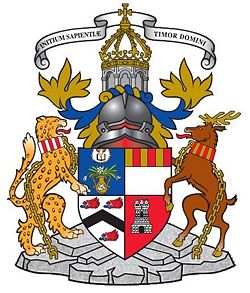Team:Aberdeen Scotland/Project
From 2010.igem.org
University of Aberdeen - ayeSwitch
| You can write a background of your team here. Give us a background of your team, the members, etc. Or tell us more about something of your choosing. | |
|
Tell us more about your project. Give us background. Use this is the abstract of your project. Be descriptive but concise (1-2 paragraphs) | File:Aberdeen Scotland team.png Your team picture |
| Team Example |
| Home | Team | Official Team Profile | Project | Parts Submitted to the Registry | Modeling | Notebook | Safety |
|---|
Contents |
Overall project
Bio-traffic light systems; engineering toggle switches in yeast using translational control of gene expression
This synthetic biology project will engineer a novel gene circuit allowing yeast to express either a green, or cyan fluorescent protein, in a stable, mutually exclusive way, thus exhibiting toggle switch control of expression. Exposure of yeast to specific environmental signals will switch between the fluorescent proteins. In contrast to existing genetic toggle switches, employing transcriptional control to achieve regulation, this project will achieve the same control principle by engineering a translational regulation circuit in a model eukaryote. A key advantage of translational control is that it enables a more rapid regulation of protein levels since it by-passes mRNA synthesis and export. Translationally regulated toggle switches could have multiple applications, stably recording exposure to environmental triggers, or in long-term maintenance of therapeutic protein synthesis (1).
Project Details
We will implement a translational control toggle switch using two proteins, Iron Response element binding Protein (IRP), and MS2-stem loop binding protein (MS2-BP); both proteins bind RNA stem loops in a sequence-specific manner. In the toggle switch circuit, the gene for IRP will contain an MS2 RNA stem in its 5’ leader; a second gene will encode MS2-BP, with an iron response element in its 5’ leader. Each RNA-binding protein can potentially inhibit the translation of the other (2,3). The two RNA binding proteins will be fused to GFP and CFP respectively, to allow fluorescence monitoring of toggle switch position. By additionally regulating the transcription of each RNA-binding protein gene, using galactose- and copper-inducible promoters respectively, a re-set function is established, allowing cyan/green toggling. The project has scope for development if time allows; translational control of stop codon readthrough using suppressor tRNAs can be used to tag IRP-GFP with a destabilising peptide tag, acting as a translationally controlled toggle reset.
Mathematical modelling will be used to describe the expression of the circuit’s genes, including both transcription and translation. Initially, we will use ordinary differential equations to predict the concentration of proteins in response to signal input. Later refinement will employ a stochastic model of translation that considers the traffic of ribosomes on the mRNAs, and links to the transcription process. The presence of a protein blocking the 5’ leader of an mRNA will be modelled by reducing the probability with which ribosomes bind the mRNA. Stochastic simulations will moreover allow generalising predictions from single cells to populations of cells. The proposed model will be validated by comparing the predictions to experimental data. Overall, the project will test the hypothesis that synthetic toggle switches can be engineered using translational control. The project will additionally establish a translational control toolkit for eukaryote bioengineering. The specific objectives and anticipated outcomes of this project are as follows;
- Development of deterministic and stochastic mathematical models of translational toggle switches to guide circuit design.
- Construction of RNA binding protein BioBricks, fused to GFP and CFP, in yeast expression cassettes.
- Testing of RNA-binding protein/fluorescent protein expression in yeast, at the single cell and population levels.
- Iterative improvement of the model using experimental data, and test of new predictions generated by the model.
Part 2
The Experiments
Part 3
Results
References
- Haynes KA and Silver PA (2009), J. Cell Biol., 187:589-96
- Oliveira CC, et al. (1993) Nucleic Acids Res; 21:5316-22.
- Stripecke R, et al (1994) Mol Cell Biol; 14:5898-909.
 "
"
